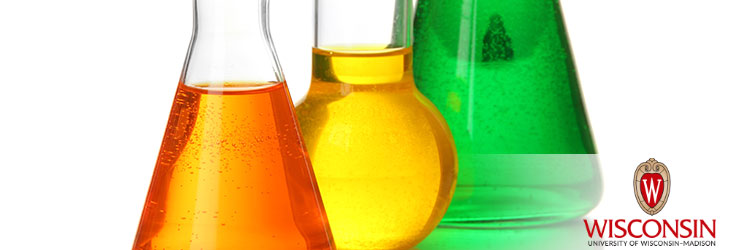Materials & Chemicals

Phosphine Ligands Made Cheaper, Better
WARF: P130268US02
Inventors: Jennifer Schomaker, Robert Grigg, Ryan Van Hoveln
The Wisconsin Alumni Research Foundation (WARF) is seeking commercial partners interested in developing groundbreaking methods for preparing chiral phosphine ligands used in synthetic chemistry.
Overview
Enantiomers are pairs of compounds that have the same chemical formula but different spatial structures (like your left and right hand, they are non-superimposable mirror images of each other). This is important because the different structures can have distinct reaction properties. As a result, enantioselectivity, the ability to distinguish and control which enantiomer is being produced and used, is an important ligand production parameter.
Phosphine ligands are key components in many important enantioselective transformations, such as asymmetric Diels-Alder reactions and hydrogenations. Until now, synthesizing these ligands has been expensive and required multiple steps.
Phosphine ligands are key components in many important enantioselective transformations, such as asymmetric Diels-Alder reactions and hydrogenations. Until now, synthesizing these ligands has been expensive and required multiple steps.
The Invention
UW–Madison researchers have developed methods for synthesizing novel classes of chiral phosphine ligands via enantioselective copper-catalyzed halogenation. The process is rapid and flexible, and also can be used to streamline the preparation of known phosphines.
The researchers previously described their ‘recycling’ method for use with aromatic compounds. Now, they have rendered the process enantioselective using an asymmetric bidentate phosphine ligand to produce scaffolds with high enantiomeric purity.
In essence, the use of the phosphine ligand helps form a chiral center in a complex product that is otherwise costly or impossible to create.
The researchers previously described their ‘recycling’ method for use with aromatic compounds. Now, they have rendered the process enantioselective using an asymmetric bidentate phosphine ligand to produce scaffolds with high enantiomeric purity.
In essence, the use of the phosphine ligand helps form a chiral center in a complex product that is otherwise costly or impossible to create.
Applications
- Preparing known and novel phosphine ligands
- Synthesizing intermediates for other useful compounds, like therapeutic agents
Key Benefits
- Process is less expensive, easier and more resourceful.
- The new ligands show better reactivity and enantioselectivity.
- Facilitates cheaper/more effective catalysis
- May enable reactions that cannot be done with current ligands
Additional Information
For More Information About the Inventors
Related Technologies
Publications
- Grigg R.D., Van Hoveln R. and Schomaker J.M. 2012. Copper-Catalyzed Recycling of Halogen Activating Groups via 1,3-Halogen Migration. J. Am. Chem. Soc. 134, 16131-16134.
Tech Fields
For current licensing status, please contact Mark Staudt at [javascript protected email address] or 608-960-9845